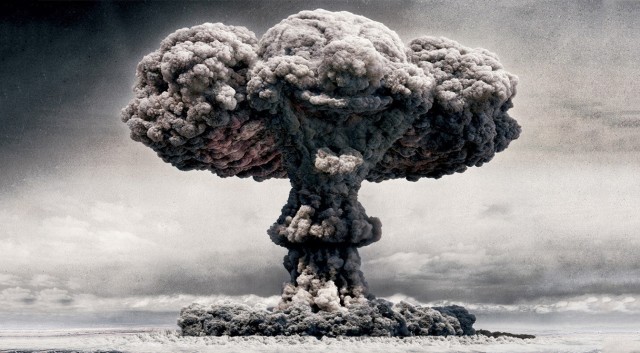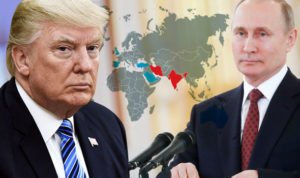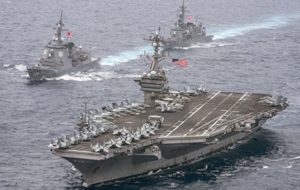Human history has been full of battles and wars, some are big and some are small. But if World War happens again, it might be humanity’s biggest battle yet. Advanced technology, massive troops, and a more intensive strategy would all be involved. People have talked about a possible World War 3 for decades. It almost started in the 1960s, during the Cold War between Russia and the United States, but thankfully we managed to avoid that.
But at the end of December 2019, Iranian backed militias in Baghdad attacked the US embassy in an attempt to storm it. The embassy assault came after over a dozen separate attacks on other American and coalition bases throughout the country, which had resulted in the death of one American contractor and four service members.
In all likelihood, the attack on the American embassy in Baghdad was purely symbolic and meant to ignite a frenzy of fresh attacks against American targets in the nation. Shortly after the attack on the US embassy, American intelligence tracked Iranian General Qasem Soleimani as he landed in Baghdad international airport in a private plane.
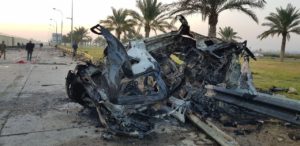
There he met with a high ranking Iraqi official, Abu Madhi al-Muhandis, and the two quickly climbed into a two-car convoy. Minutes later, a firestorm of tensions would erupt between Iran and the USA when missiles fired from US drones destroyed the convoy – but who exactly was General Qasem Soleimani? Why are these two nations at each other’s throat once more? And is this situation similar to past events that have lead to massive global conflicts including world wars?
Who Is General Qasem Soleimani?
General Qasem Soleimani is a figure well known by NATO and Israeli commanders and much-hated by both groups. Soleimani got his start during the Iran-Iraq War of 1980, where he rose through the ranks from delivering water to troops at the front to becoming a senior commander. With a keen strategic mind, by his late twenties, Soleimani was already a veteran senior military official.
He would make a name for himself inside the Iranian revolution’s new leadership not just for his ability to command troops at the front, but for coordinating raiding parties who traveled deep into Iraq. Soleimani was already displaying a talent for asymmetrical warfare- the unconventional style of warfare that makes use of terrorist, insurgent and even criminal elements to wage a non-traditional war against a traditional military power.
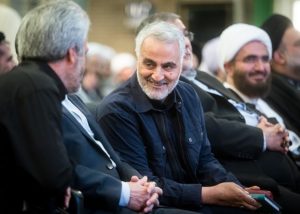
His abilities as a brilliant asymmetrical tactician would soon see him in command of the legendary Iran Quds Force- a military force that fights Iranian conflicts outside of the nation, with the express goal of toppling Israel and removing the US and other Western powers from the Middle East while expanding Iranian influence in the region. Labeled a terrorist organization by the US and many other nations, Quds Force operatives employ terrorists and criminal networks to conduct their operations, and for over two decades Soleimani was the brains behind the Quds Force.
Under Soleimani’s leadership, the Quds Force trained and equipped Hezbollah into a force to be let loose against Israel, and launched attacks against Israel in Lebanon and from inside Israeli territory itself. It was also Soleimani who bailed out the Syrian government, shipping millions of dollars of weapons, equipment, and cash to Damascus directly.
Now though people are asking: could this lead to a major war- potentially even a world war? Drawing a parallel to the assassination of Arch Duke Ferdinand in World War I, the US strike against Soleimani has many worried about what might happen next.
What Iran Can Do Next?
For Iran though, the options are far more limited than they were for Austria-Hungary in World War I, mostly because Iran lacks the powerful allies that Austria-Hungary enjoyed at the turn of the 20th century Europe. Without Germany, Austria-Hungary could never have attempted to seek revenge on the Serbian government for the killing of Arch Duke Ferdinand, and thus snowball the series of diplomatic catastrophes that launched World War I.
To make matters worse, Europe was already a simmering bed of potential conflict. The Ottoman Empire was in full decline after centuries and steadily retreating out of Europe, leaving behind territories that were quickly claimed by European powers. A detente of sorts between Europe’s major powers had spurned on an arms race and the smallest of matches could ignite a firestorm as it inevitably did.
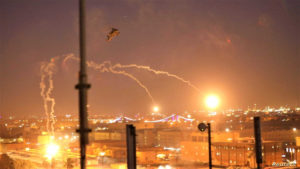
In the present day, the political situation in the Middle East is simply not similar enough to pre-World War I Europe to threaten a full-blown global war between major powers. Iran remains relatively isolated on the world stage, and not even Russia or China- the US’s traditional competitors- are too interested in risking the ire of the US by drawing close to the rogue nation.
If Iran chooses to retaliate militarily against the US for the killing of Soleimani, then it would do so completely on its own, and that would be tantamount to national suicide. Instead, Iran will seek to attack the US and its allies covertly, using its wide array of unconventional forces and terrorist, insurgent and criminal allies- many of which were groomed into Iranian service by Soleimani- to attack Western interests indirectly. What we should expect to see is a wave of terrorist attacks against American and NATO targets in the region, along with attacks against Iran’s long-time adversary and US ally, Saudi Arabia.

